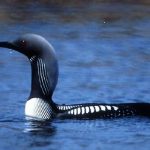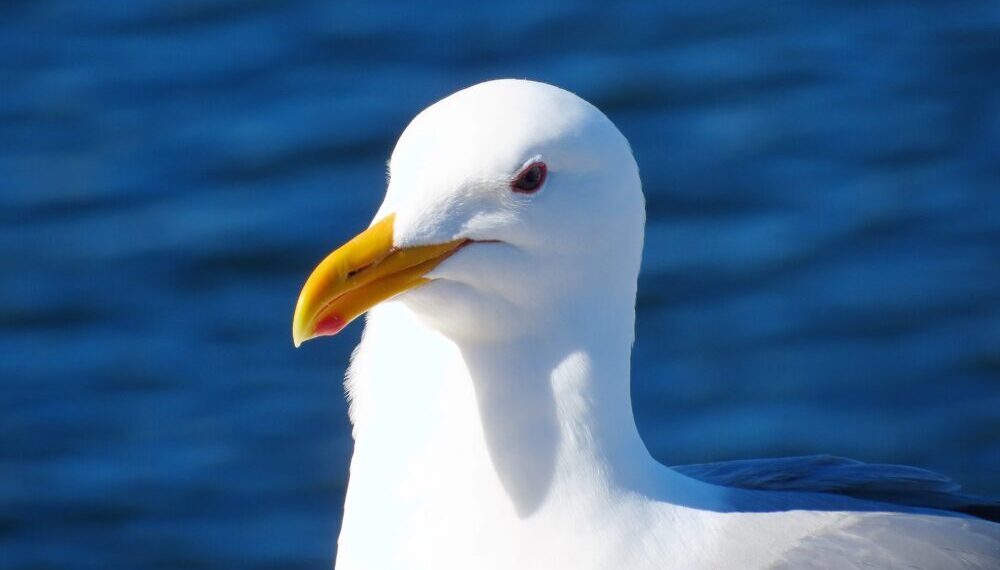Arctic Tern
 The Arctic Tern has a circumpolar distribution, breeding colonially in the Arctic regions of Europe, Asia, and North America. The species is strongly migratory, seeing two summers each year as it migrates from its northern breeding grounds in the Arctic to the oceans around Antarctica and back, close to 50,000 km each year. Read More….
The Arctic Tern has a circumpolar distribution, breeding colonially in the Arctic regions of Europe, Asia, and North America. The species is strongly migratory, seeing two summers each year as it migrates from its northern breeding grounds in the Arctic to the oceans around Antarctica and back, close to 50,000 km each year. Read More….
Bonaparte Gull
 Bonaparte’s gulls are plentiful all over the Pacific Northwest Coastal Region and winter up and down both the east and west sides of Vancouver Island. The smallest gull of North America, the Bonaparte Gull is often described as tern-like in flight. Read More….
Bonaparte’s gulls are plentiful all over the Pacific Northwest Coastal Region and winter up and down both the east and west sides of Vancouver Island. The smallest gull of North America, the Bonaparte Gull is often described as tern-like in flight. Read More….
Brandt’s Cormorant
 The pelagic cormorant is the smallest of the three species that nest on the island. It is a slender bird in flight and has a straight neck, a small head, and a rapid wing beat. The throat patch in pelagic cormorants is red, and in the summer it has two white flank patches. Read More….
The pelagic cormorant is the smallest of the three species that nest on the island. It is a slender bird in flight and has a straight neck, a small head, and a rapid wing beat. The throat patch in pelagic cormorants is red, and in the summer it has two white flank patches. Read More….
Brown Pelican
 The brown pelican has a very large, hooked beak equipped with a huge pouch. They have short legs and webbed feet, and large wings that span up to 2 meters. They can soar for hours on these wings and when they see feed, they fold up their wings and dive, opening their pouches up as they hit the water, scooping up the fish. Read More….
The brown pelican has a very large, hooked beak equipped with a huge pouch. They have short legs and webbed feet, and large wings that span up to 2 meters. They can soar for hours on these wings and when they see feed, they fold up their wings and dive, opening their pouches up as they hit the water, scooping up the fish. Read More….
Common Loon
 The common loon has a streamlined body, and its legs are located farther back on its trunk, allowing for optimal movement in the water but making it very clumsy on land. It’s an incredible diver with Its powerful leg muscles that speed it through the water. Its bones are heavier than those of most birds. Read More….
The common loon has a streamlined body, and its legs are located farther back on its trunk, allowing for optimal movement in the water but making it very clumsy on land. It’s an incredible diver with Its powerful leg muscles that speed it through the water. Its bones are heavier than those of most birds. Read More….
Common Murre
 There are two species of murre, the common murre, and the Thick-Billed Murre. They and their close relatives, the razorbills, dovekies, guillemots, and puffins are all members of a group of black and white seabirds called auks. Read More….
There are two species of murre, the common murre, and the Thick-Billed Murre. They and their close relatives, the razorbills, dovekies, guillemots, and puffins are all members of a group of black and white seabirds called auks. Read More….
Double-Crested Cormorant
 Double-crested cormorants occupy many water habitats across North America, including coastlines, estuaries, lakes, and ponds. Most spend winter in the southern United States, but many migrating birds winter on the south coast of the Pacific Northwest. Read More….
Double-crested cormorants occupy many water habitats across North America, including coastlines, estuaries, lakes, and ponds. Most spend winter in the southern United States, but many migrating birds winter on the south coast of the Pacific Northwest. Read More….
Herring Gull
 Herring gulls can be quite useful in keeping our beaches clean by eating any and all edible debris. The Herring gull nests in a variety of sites, but is always near a body of water. On offshore islands, they frequently occupy flat ground. On the mainland, however, they tend to nest on cliffs, probably to avoid predatory mammals. Read More….
Herring gulls can be quite useful in keeping our beaches clean by eating any and all edible debris. The Herring gull nests in a variety of sites, but is always near a body of water. On offshore islands, they frequently occupy flat ground. On the mainland, however, they tend to nest on cliffs, probably to avoid predatory mammals. Read More….
Horned Grebe
 The horned grebe is up to 40 cm in length, with up to a 65 cm wingspan. Both sexes are similar in shape, size, and colour with a stocky body and thin, short bill. The bill is black, the feet are set quite far back, and it has white secondaries which are visible in flight. Read More….
The horned grebe is up to 40 cm in length, with up to a 65 cm wingspan. Both sexes are similar in shape, size, and colour with a stocky body and thin, short bill. The bill is black, the feet are set quite far back, and it has white secondaries which are visible in flight. Read More….
Pacific Loon
 Pacific loons’ webbed feet help them power through the water, Pacific Loons are also exceptional divers. When on land, the Pacific Loon looks extremely awkward because its legs aren’t designed for walking. For this reason, the loon can only take off from water. Read More….
Pacific loons’ webbed feet help them power through the water, Pacific Loons are also exceptional divers. When on land, the Pacific Loon looks extremely awkward because its legs aren’t designed for walking. For this reason, the loon can only take off from water. Read More….
Pied Billed Grebe
The Pied Billed Grebe is smaller than a teal. Its body is buff-colored and its bill has a dark band on it. Its rump is white. Pied Billed Grebes breed from British Columbia to southern Mackenzie in the west, and from Nova Scotia southward in the east. They spend winters along the coast of southern BC. Read More….
Red Necked Grebe
Podiceps Griselda, more commonly known as the Red Necked Grebe, is a migratory aquatic bird found on Vancouver Island during the winter months. Like all grebes, the Red-Necked is a wonderful swimmer and a fast diver, they respond to danger by diving rather than flying away. The feet are positioned far back on the body, near the tail, this makes the bird ungainly on land. It dives for fish. All Grebes will swallow their own feathers, possibly to protect the digestive system from fish bones. Read More….
Red-Throated Loon
The Red-Throated Loon is a very common visitor to the Pacific Northwest Coast. They only reach up to 65 cm long and are the smallest species of all known Loon species in the wild. They are very good at flying at speeds of up to almost 80 km per hour, and they can fly for a very long period of time. These birds are very beautiful. Read More….
Ring-Billed Gull
 The Ring-Billed Gull nests in mixed colonies with other gulls. Colonies are located on sandy islands, with the nests being built on the ground. Both members help build the nest, which is made from grass and twigs. They lay up to 4 eggs that will hatch in about 4 weeks. Read More….
The Ring-Billed Gull nests in mixed colonies with other gulls. Colonies are located on sandy islands, with the nests being built on the ground. Both members help build the nest, which is made from grass and twigs. They lay up to 4 eggs that will hatch in about 4 weeks. Read More….

The Island has many types of seabirds, gulls, terns, cormorants, murres, puffins, grebes, loons, and many more. Take a walk along any beach, look toward the sea, and you will be amazed. I have always enjoyed watching the almost comedic antics of our gulls. True seabirds are ocean-going birds that make their living off the sea, most only coming to land to breed and raise their young. Not often seen during the non-breeding season. These birds are quite easily viewed in spring and summer when they come to shore to breed.

A seabird’s life on land is pretty chaotic. As spring unfolds, huge rafts of seabirds gather around nesting islands as they prepare to breed. The rocky coast of Vancouver Island provides seabirds with an ideal nesting habitat. Thousands of coastal rocks and islands dot the coastal regions. Though small they provide a safe breeding habitat for many species of seabirds. Along the shores of Vancouver Island, you will find the many other birds we have listed here that also make a living from the sea.




Hi I have been gathering bird footage in Victoria BC. Go to YouTube and enter Doug MacCormack click on videos and have a look at my latest Diving Seabirds. Doug
will check them out Doug